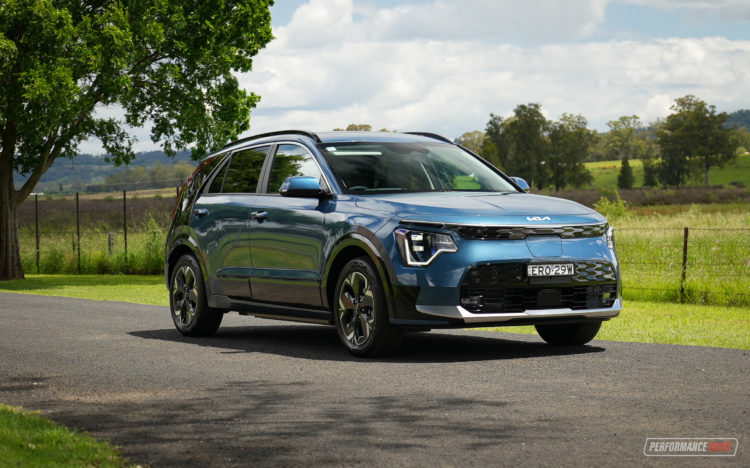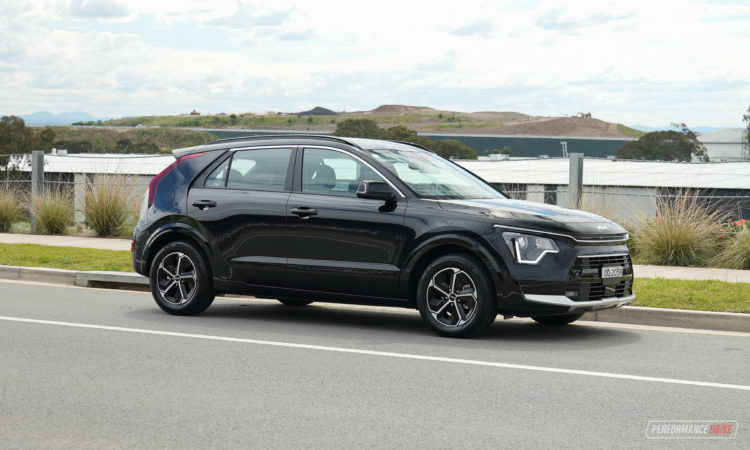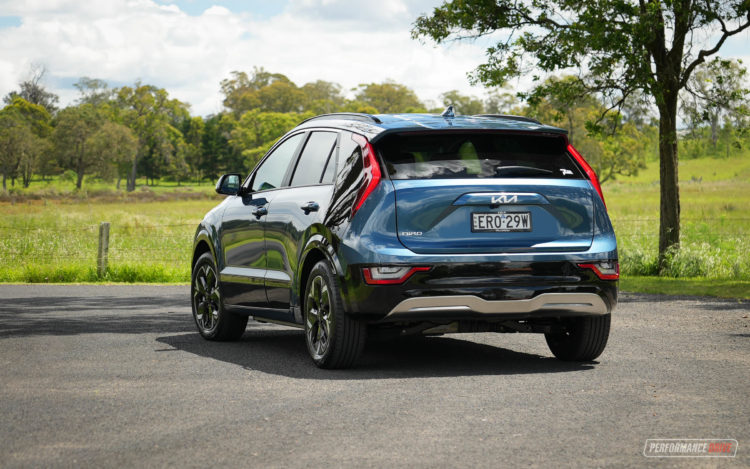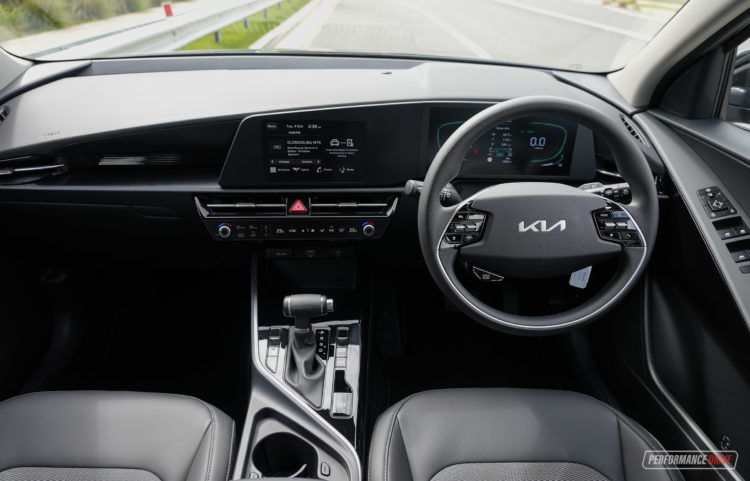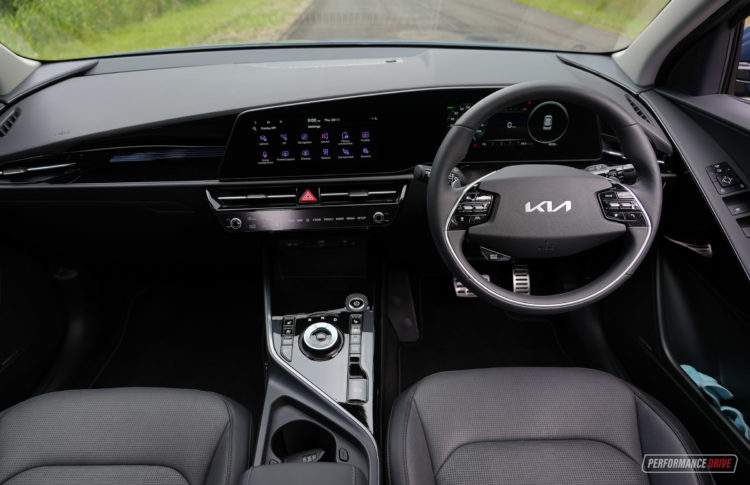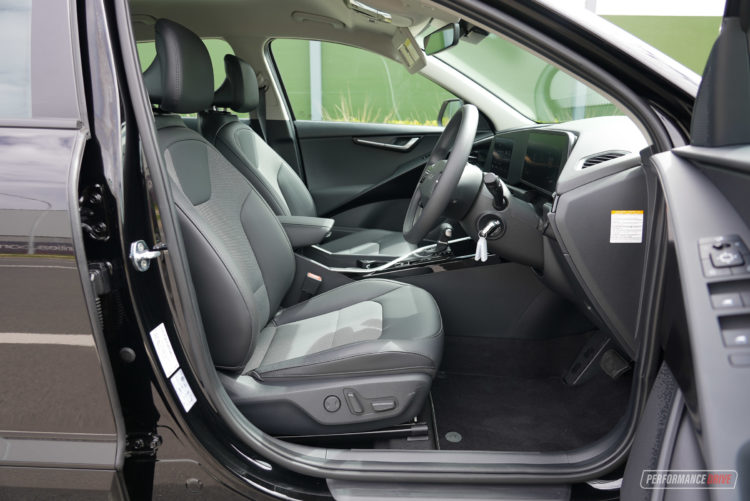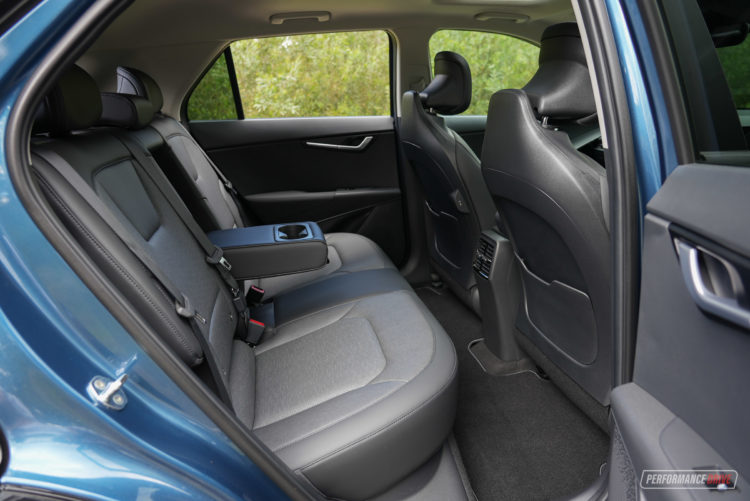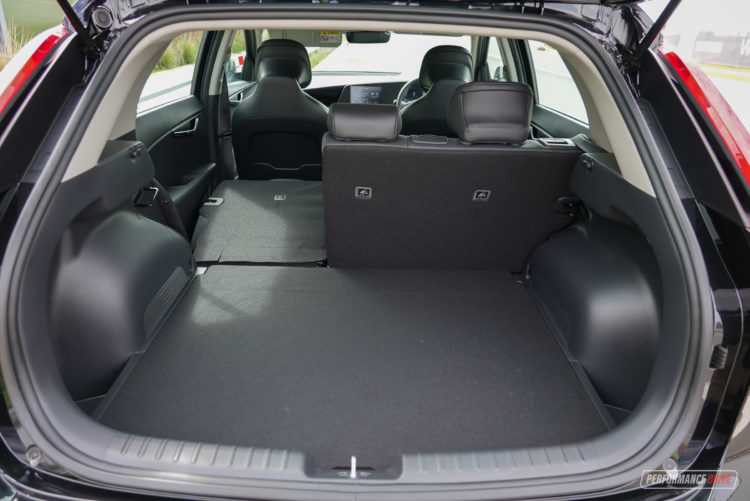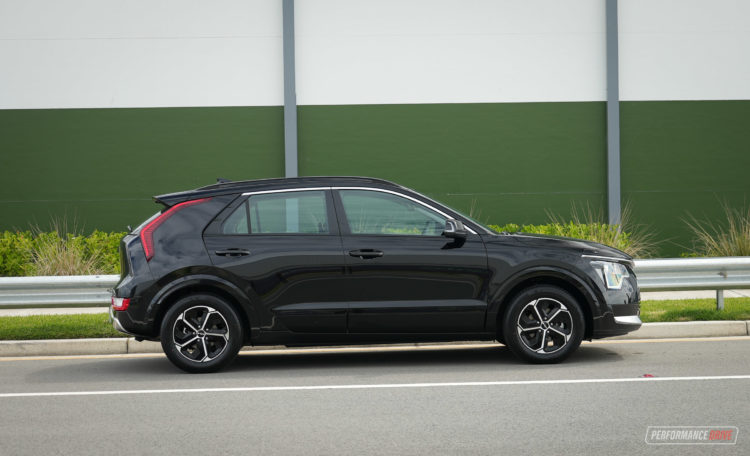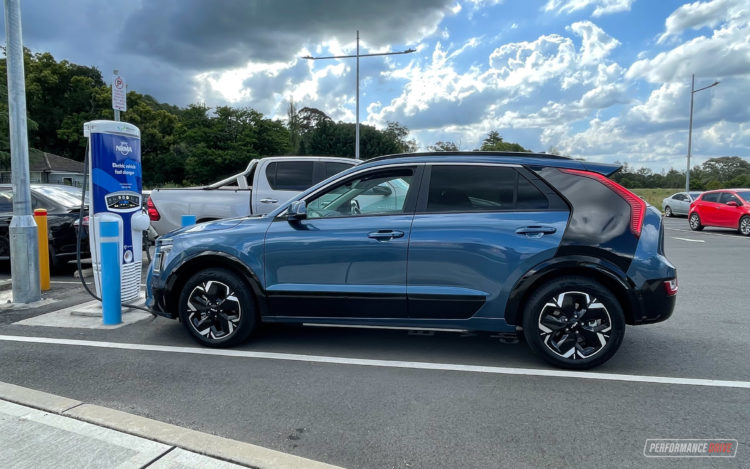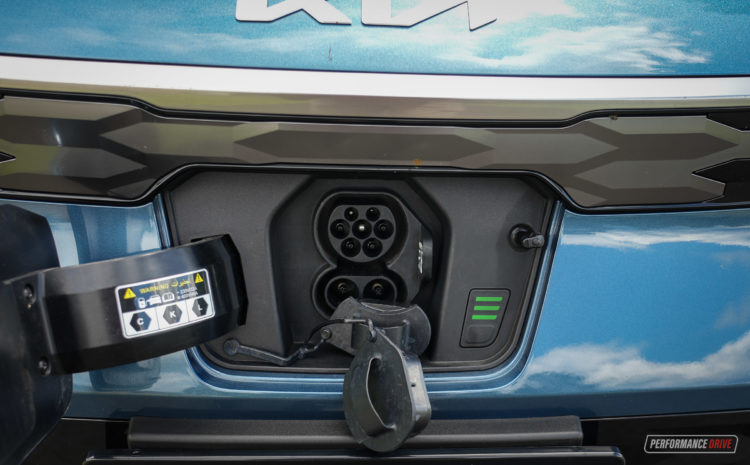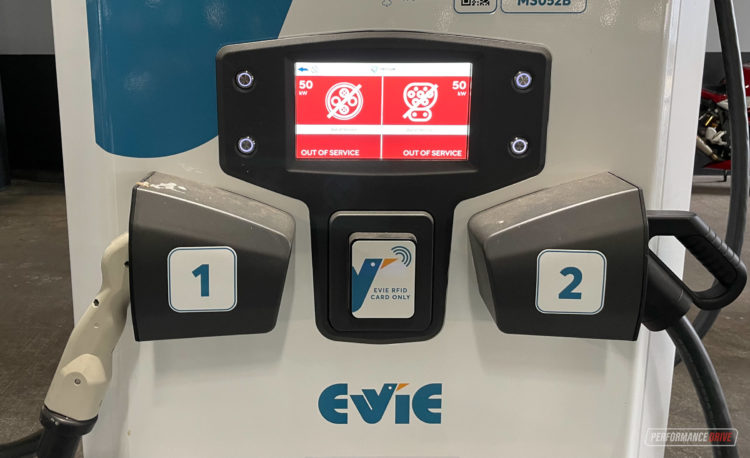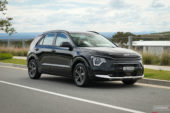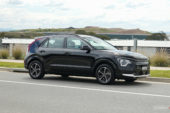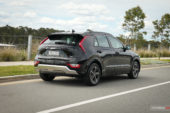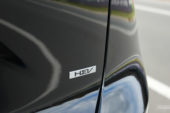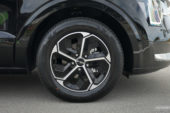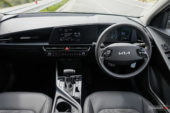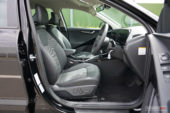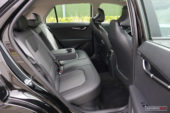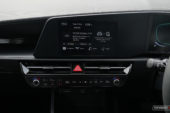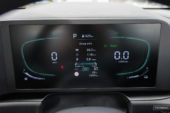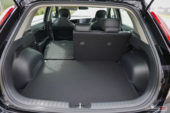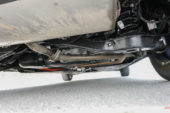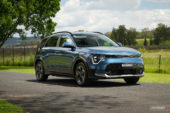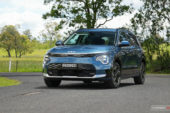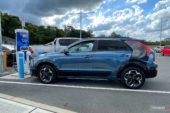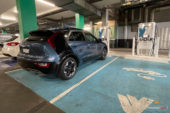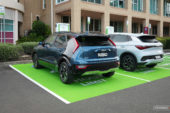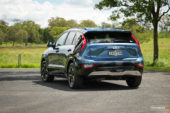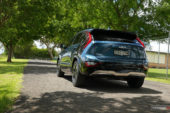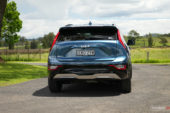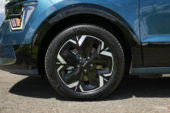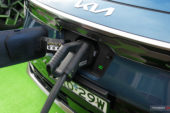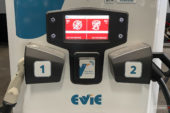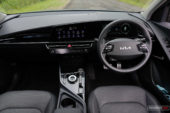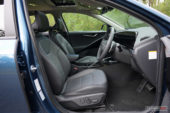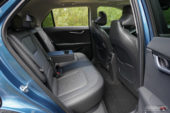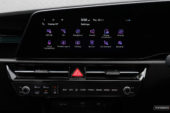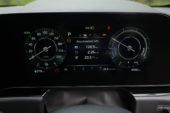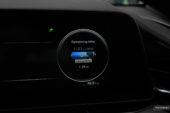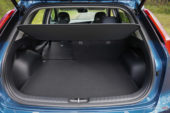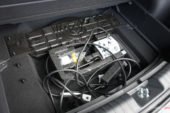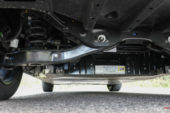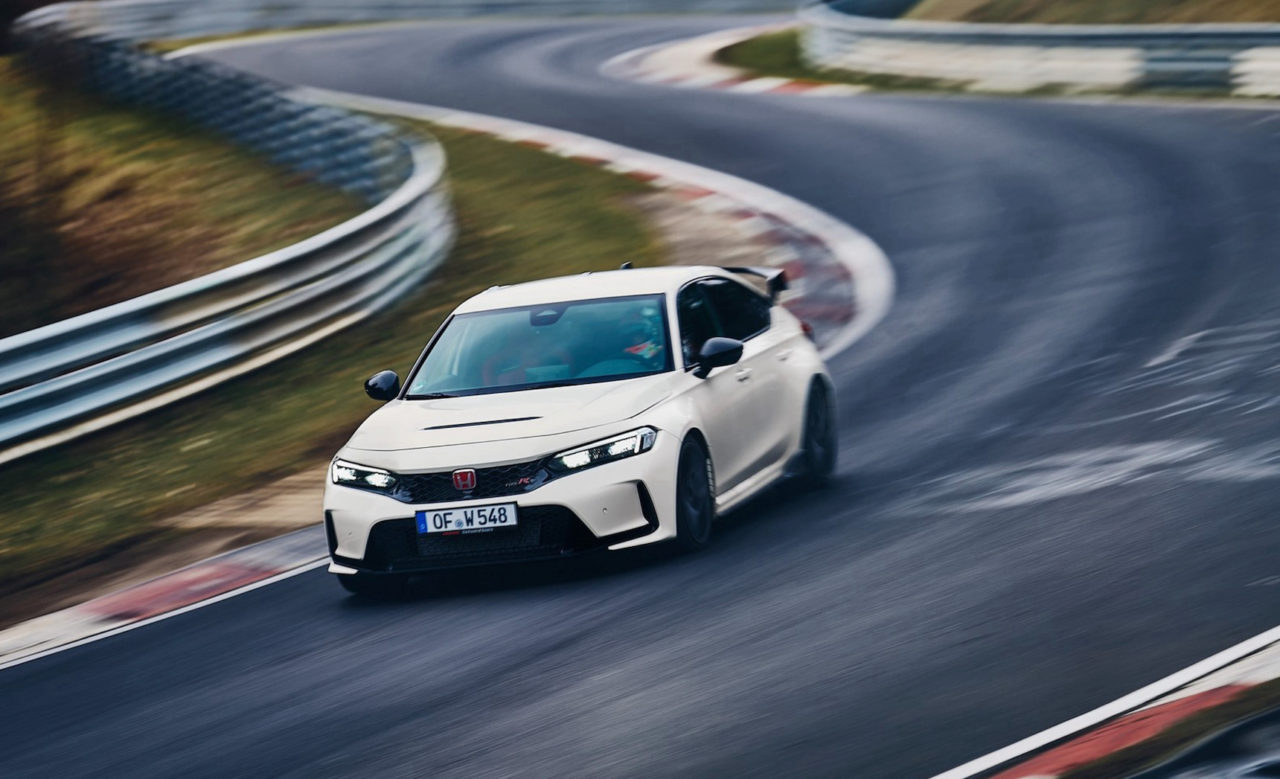Kia is hoping its follow-up to the first-gen Niro will take off where its admittedly lacklustre predecessor left off, offering a more mature and striking design package and a more fuel-efficient hybrid engine.
While Kia’s accent across almost every segment has been quick and formidable, the company has been somewhat slow to get the ball rolling on hybrid powertrains, which not-so-coincidentally happens to be the Niro’s party piece. For the second-gen model Kia has dropped the plug-in hybrid from the local range and now simply offers a conventional hybrid and a fully electric option.
Two trim lines are offer for both powertrain options, with the S and GT-Line. Here we’re testing both ends of the lineup, with the Hybrid S and the EV GT-Line. Prices start from $44,380 for the Hybrid S and top out at $72,100 for the EV GT-Line (excluding on-roads).
2023 Kia Niro Hybrid S – THE SPECS
Engine: 1.6-litre petrol four-cylinder hybrid
Output: 104kW / 265Nm
Transmission: Six-speed dual-clutch auto
Drive type: Front-wheel drive
Wheels: F & R: 16×6.5, 205/60
ANCAP: Five stars
Tare weight: 1454kg
Power-to-weight: 13.98:1 (kg:kW)
Official fuel economy: 4.0L/100km
Economy during test: 4.3L/100km
Fuel capacity/Type: 42L/91 RON
Power efficiency: 26kW:L/100km
Priced from: $44,380
2023 Kia Niro EV GT-Line – THE SPECS
[column width=”47%” padding=”6%”]Battery: 64.8kWh lithium-ion
Output: 150kW / 255Nm
Transmission: 1-speed auto
Drive type: Front-wheel drive
Wheels: F & R: 17×7.0, 215/55
ANCAP: Five stars
Tare weight: 1727kg
Power-to-weight: 11.51:1 (kg:kW)
Official range: 460km
Recharge capacity: DC up to 350kW, AC 11kW
Recharge time 10-80%: DC 50kW 73min, DC 350kW 18min[/column] [column width=”47%” padding=”0″]0-60km/h: 4.00 seconds*
0-100km/h: 7.37 seconds*
60-110km/h: 4.52 seconds*
1/4 mile: 15.52 seconds at 152.6km/h*
Max acceleration: 0.601g*
100-0km/h braking: 2.98 seconds at 38.68 metres*
Max deceleration: -1.289g*
Decibel at idle: 23*
Peak decibel at 60-100km/h: 66*
Priced from: $72,100[/column][end_columns]
* Figures as tested by PerformanceDrive on the day. Factory claims may be different
2023 Kia Niro – THE PACKAGE
Kicking off with the looks department, the Niro has a lot going for itself, with Kia taking a dramatic leap over the first-gen Nir. We think it looks particularly smart and sharp with the updated styling package. It might not be everyone’s cup of tea, but you can’t deny it’s a more focussed and defined affair than its predecessor. The GT-Line stands out with its black stripe over the D-pillar for a two-tone look, and it features unique 17-inch alloy wheels over the 16s on the S.
The Niro’s features list is headlined by LED daytime running lamps, adaptive cruise control, cloth and faux leather upholstery with a powered driver’s seat, dual-zone climate control and an 8.0-inch infotainment system with digital radio and wireless Apple CarPlay and Android Auto. You’ll also find a 4.2-inch driver’s display and a generous safety equipment list that includes autonomous emergency braking, junction AEB assist, lane-keep assistance, blind-spot mentoring, rear cross-traffic alerts and a rear-view camera with rear parking sensors.
Step inside the cabin and you’ll find a surprisingly spacious cabin for the segment. The interior is modern, but in base S form feels a little bit like a classy contemporary apartment that hasn’t been fully furnished yet. What we mean by that is there’s a huge border around the 8-inch infotainment system, with the GT-Line getting twin 10.25-inch unit. A raft of vacant buttons around the gear lever and the lack of LED headlights, front parking sensors and keyless entry are also missing on the base S.
Having said that, the design is clean inside the predominantly black interior and won’t leave buyers feeling too short-changed. It will leave you blind, though, with the midday sun reflecting perfectly off the glossy piano black centre console directly into your retinas.
The front seats are comfortable and look sleek in their mix of cloth and leatherette upholstery, with leather for the GT-Line. Though, the two-spoke urethane steering wheel on the S does feel like the most prominent budget touchpoint. The GT-Line’s leather-wrapped wheel is much nicer.
While space and practicality are often an afterthought when it comes to compact SUVs, this isn’t the case for the Niro. It is classified as a small premium SUV, going up against the likes of the Audi Q2 and Q3, BMW X1, and Lexus UX, but the reality is that it’s only 200mm shorter than the Toyota RAV4, which means there’s no squeezing inside.
Even for adults seated in the second row, there is a heap of headroom and a decent amount of legroom even behind a tall driver. The flat floor, including through the middle seat area, also helps, with easy access to the usual set of ISOFIX anchors and top tether mounts for child seats.
The same goes for cargo space in the rear, with the Niro’s boot rated at a very acceptable 425L, which expands to 1392L with the rear seats folded flat on the Hybrid S, and an impressive 475L/1392L in the EV GT-Line. These measurements are perfectly accommodating for larger items during weekend escapes.
All up, the Niro’s cabin is impressively spacious and practical, and while there’s more than a few reminders that the S is indeed the base model, the interior design is clean and modern enough to meet the needs of a variety of lifestyles.
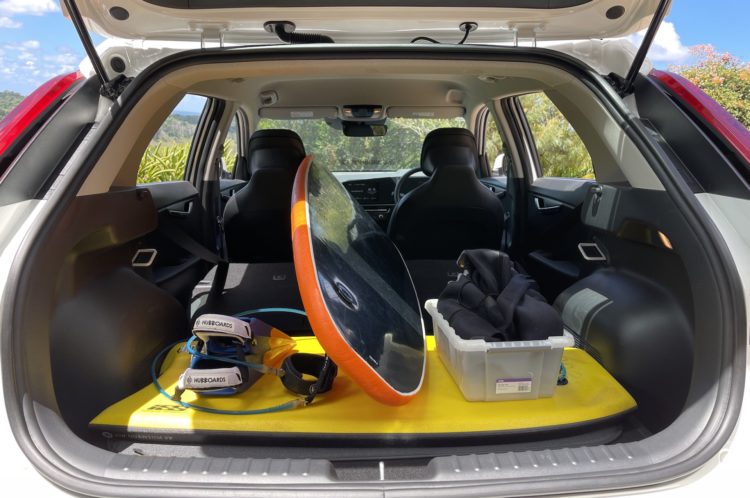 2023 Kia Niro – THE DRIVE
2023 Kia Niro – THE DRIVE
The headline attraction of the second-generation Niro is no doubt Kia’s parallel hybrid powertrain that the company hopes will snatch buyers away from Toyota’s lionshare of the hybrid SUV market.
Under the bonnet you’ll find a 1.6-litre naturally-aspirated petrol paired with an electric motor and a small 1.32kWh lithium-ion battery pack, with combined outputs standing at 104kW/265Nm, sent through a seven-speed DCT throwing power to the front wheels.
While Kia’s entry lacks the overall refinement of something like Toyota’s tech, it’s a relatively smooth and particularly fuel efficient engine. Acceleration off the line is instant thanks to the electrical assistance, and while it doesn’t have much power on offer, the delivery, at least, is progressive and struggle-free, most of the time. It does prefer to work away on electric power when it can, which helps immensely to keep fuel use at a minimum, with the petrol engine kicking up steam once you’re already underway.
There can be some jerky moments when the ICE unit kicks in to supply some extra juice, but for the most part the two have a smooth relationship. The 1.6-litre petrol is somewhat raspy when it kicks into life, and can rev quite high to keep up the pace on the highway, though around town the power mix works well in the background.
Fuel efficiency is by far the most important design brief for the Niro Hybrid, and we’re happy to report that Kia has knocked it out of the park. During our 1000km of town, country road and highway testing, the Niro averaged 4.3L/100km and had no problem sitting around the 3.5L/100km mark while driving a mix of urban and B-roads, only hitting the 4s when pushed on the highway.
Admittedly we had the Niro in ‘eco’ mode throughout our testing, but we weren’t light on the throttle whatsoever to replicate the driving style of the average Australian punter and still returned some fabulous fuel economy figures.
In the EV electric model, Kia uses a 64.8kWh battery that sends power to a front-mounted electric motor, as before. Power output remains unchanged, at 150kW, but Kia has detuned the peak torque down to 255Nm from 350Nm. To be honest, the old model with 350Nm, it was a bit too much and it wasn’t hard to overwhelm the front tyres. Now, it’s much more balanced and gets off the line without a fuss.
We ran our usual performance tests on the EV purely to see how the revised motor output performs. The previous EV did the sprint in 7.12 seconds according to our tests. Despite offering 95Nm less torque, the new model achieved 0-100km/h in 7.37 seconds (Kia claims 7.8). That’s a small gap from the predecessor, but for the economy and tyre savings it brings, we reckon it’s worth it.
We didn’t test the new hybrid because we tested the previous model with the plug-in hybrid package (same 104kW) and it crossed 0-100km/h in 9.79 seconds – Kia claims 10.4 seconds for this Hybrid S. We’d estimate a similar time for this new model.
About the only time you miss that extra torque is when you have a full car load, and if you’re driving up long steep hills. The old model charged ahead with no regard for the laws of gravity, whereas in this new model, it does feel like you’re pushing it and it soon runs out of puff. Particularly in the top end.
The official range is listed at 460km (WLTP), up from 455km in the old model. In the real world you can expect quite close to that. Hyundai-Kia EV battery systems are, in our experience, some of the most dependable out there in terms of official range and the on-board calculator. About the only issue we have with the overall experience is once again the lack of infrastructure in Australia.
During our test we encountered yet another malfunctioning DC charging station, which really throws out your day. Fortunately, more and more stations are popping up so it’s not too far to drive to the next one. If you’re in a big city that is.
In terms of the ride, the Niro is just the second Kia since COVID hit to receive a special Australian ride and handling tune for the suspension. The ride in the Hybrid S is a little less settled than we prefer, tussled by some of the bumps you might expect it to glide over around town, but the ride feels more stable and balanced as you pick up speed.
On rougher country roads, the Niro can be a bit intimidated by larger bumps, however, it remains confident – particularly so for a compact crossover SUV – and doesn’t feel brittle or out of its depth. This is also thanks to the 16-inch alloys that are wrapped with tyres featuring a more forgiving sidewall, which is something to keep in mind for those tossing up the GT-Line.
In the EV GT-Line there is definitely a heavier characteristic lingering within. But in saying that it can feel more planted and solid, as long as you’re not driving it like it’s a hot hatch. Power-down from corner exists is accompanied by a mere tug and nudge as the electric motor serves up its instant hit of torque. It is fun to dart around in slow speed conditions, as you can zip through traffic like it’s a motorbike.
Our only real gripe with the Niro is that its steering rack is completely void of feeling at times, and feels artificially light when you’d like it to, though this does lend itself perfectly when it’s time to squeeze in or out of a tight park.
2023 Kia Niro – THE VIDEO
2023 Kia Niro – THE VERDICT
All up, the Niro ticks the important boxes for everyday drivability, versatility on rough Australian roads, and seriously impressive fuel efficiency. The EV is better suited to those living in the city and those who have access to a home or office charger. We think it is the more interesting vehicle to drive out of the two, and it is substantially quicker than the Hybrid.
On the other hand, the Niro Hybrid is a great all-rounder and perhaps better suited to buyers that simply want dependability, space and a practical yet modern design. It’s also a lot more affordable than the EV.
[column width=”47%” padding=”6%”]PROS:
– Fuel-efficient hybrid
– Impressive space and practicality
– Neat and modern styling inside and out
– EV offers punchy urban performance
[/column] [column width=”47%” padding=”0″]CONS:
– Lacks steering feel
– Bumpy ride quality at times
– Base model lacks features
– EV is a big price step up[/column][end_columns]
As always, if you’re thinking about buying a new car don’t forget to click here to speak with our car buying specialists.
